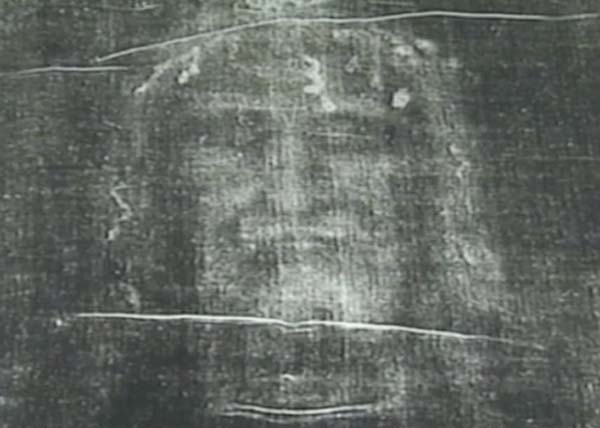Pope Nearly Endorses the Shroud of Turin, But Is It Real?

On Sunday Pope Benedict XVI prayed before the Shroud of Turin, believed by many to be the burial shroud of Jesus. Benedict said that the shroud (which he called "an icon written in blood") provides a lesson in maintaining hope in the face of adversity, and that the faithful can see their trials and sufferings "mirrored" in the suffering of Christ as depicted on the shroud.
"This is a burial cloth that wrapped the remains of a crucified man in full correspondence with what the Gospels tell us of Jesus," Benedict said.
The Vatican has never officially declared the Shroud of Turin genuine, and Pope Benedict's statement is seen as a strong endorsement of its authenticity.
Outside of faith, in the realm of science, however, there's reason to be skeptical. The Shroud of Turin is the most famous, but certainly not the only, claimed "True Shroud." In fact throughout the centuries dozens of shrouds have appeared at one time or another that were claimed to be the one true burial cloth of Jesus, often products of a lucrative trade in fake religious relics.
14th-century relic
The Shroud of Turin has been carbon dated not to the time of Christ but instead to the 14th century—perhaps not coincidentally about the time when the first record of the burial cloth appears. If the Turin Shroud really is the most important holy relic in history, it seems curious that its existence was unknown for 1,300 years.
Instead of accepting the fact that the shroud's cloth is far too new to have existed around the time of Jesus, advocates have challenged the carbon dating science, offering various reasons why the test was flawed.
Sign up for the Live Science daily newsletter now
Get the world’s most fascinating discoveries delivered straight to your inbox.
They claim, for example, that contamination and/or the effects of a fire must have led to an incorrect date. Yet these effects would have only increased the margin of error by a few hundred years—not a millennium and a half. These claims would carry more weight if other (supposedly non-contaminated) parts of the shroud had been dated back 2,000 years, but no part of it is older than about 600 years.
The numbers just don't add up.
Last year an Italian scientist and his team replicated the Shroud of Turin with materials and tools available at the time of the shroud's origin. Luigi Garlaschelli, a professor of chemistry at the University of Pavia, used linen identical to that on the shroud, made an impression over a volunteer's face and body, and artificially aged the cloth with heat. Garlaschelli's reproduction did not conclusively prove that the Shroud of Turin is a fake, but it did disprove the claim that the image is scientifically unexplainable and could not have been made by human hands.
Fakes and contradictions
There's another very good reason to suspect that the Shroud of Turin is a fake: the forger admitted it. As shroud researcher Joe Nickell noted in his book "Relics of the Christ," a document by "Bishop Pierre d'Arcis claimed that the shroud had been 'cunningly painted,' a fact 'attested by the artist who painted it.'" Not only did Bishop d'Arcis attest to knowing that the shroud was a fake in 1390, but even Pope Clement acknowledged the forgery.
Furthermore, Pope Benedict's claim that the Shroud of Turin is in "full correspondence with... the Gospels" is puzzling.
In fact, as Nickell has noted, "The shroud contradicts the Gospel of John, which describes multiple cloths (including a separate 'napkin' over the face), as well as 'an hundred pound weight' of burial spices—not a trace of which appears on the cloth."
So it seems that the Bible itself casts doubt on the Shroud of Turin. Regardless of scientific evidence—or the Pope's de facto endorsement—the debate over the shroud's authenticity will continue.
Benjamin Radford is managing editor of the Skeptical Inquirer science magazine. His new book Scientific Paranormal Investigation will be published in June; this and his other books and projects can be found on his website. His Bad Science column appears regularly on LiveScience.










